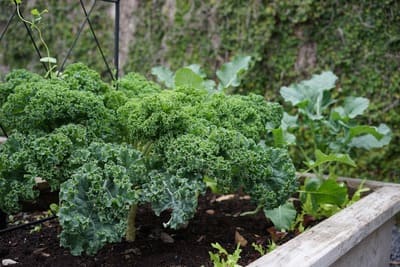Gardening in the shade doesn’t have to be a struggle. While most vegetables prefer full sunlight, many delicious and nutritious options thrive in partial or even full shade. By choosing the right shade-tolerant vegetables, you can make the most of every corner of your garden, even the less sunny spots. Let’s explore 8 vegetables that thrive in shade, along with tips to ensure your garden is a success.
Growing vegetables in shaded areas offers unique benefits that can transform underutilized spaces into productive gardens. Shaded conditions help keep the soil cooler, which is perfect for extending the harvest period of many cool-season crops. Additionally, shade reduces evaporation, meaning you’ll spend less time watering as the soil retains moisture longer. By incorporating shade-loving vegetables, you can also make the most of your garden space, even in areas where sunlight is limited.
Whether you’re gardening in a backyard with large trees or an urban space with tall buildings, these shade-loving vegetables can turn limited light into a bountiful harvest.
1. Spinach

Spinach is one of the best vegetables to grow in shade. It thrives in cooler temperatures, and partial shade helps prevent bolting, ensuring a longer harvest period.
- Light Requirement: Partial shade (3–4 hours of sunlight).
- Growing Tip: Keep the soil consistently moist and rich in organic matter to encourage tender, flavorful leaves.
2. Lettuce

Lettuce is a fast-growing leafy vegetable that performs well in shaded conditions. Whether you choose romaine, butterhead, or loose-leaf varieties, lettuce grows beautifully with just a few hours of sunlight each day.
- Light Requirement: Light to partial shade (2–4 hours of sunlight).
- Growing Tip: Harvest outer leaves regularly to promote new growth and extend the harvest season.
3. Kale

Kale is a nutrient-packed green that’s remarkably versatile. It not only tolerates shade but also benefits from cooler temperatures, which help maintain its sweet, earthy flavor.
- Light Requirement: Partial shade (3–5 hours of sunlight).
- Growing Tip: Add compost or aged manure to the soil to boost growth and flavor.
4. Arugula

Known for its distinct peppery flavor, arugula is another excellent choice for shade-loving vegetables. It grows quickly and thrives in cooler, low-light conditions, making it ideal for spring or fall planting.
- Light Requirement: Partial shade (3–4 hours of sunlight).
- Growing Tip: Plant seeds every 2–3 weeks for a continuous supply of fresh leaves.
5. Broccoli

Surprisingly, broccoli can grow well in partial shade, especially when protected from intense summer heat. While it may take a bit longer to mature, shaded conditions often result in tighter, more flavorful heads.
- Light Requirement: Partial shade (4–5 hours of sunlight).
- Growing Tip: Apply mulch to retain soil moisture and regulate temperature for optimal growth.
6. Beets

Beets are versatile vegetables for shaded gardens because both their roots and greens are edible. While partial sunlight helps root development, beets can still thrive in mostly shaded conditions, especially for their leafy tops.
- Light Requirement: Partial shade (3–4 hours of sunlight).
- Growing Tip: Thin seedlings early to give roots enough space to grow properly.
7. Swiss Chard

Swiss chard is a vibrant, low-maintenance vegetable that grows well in shaded conditions. Its colorful stems and large leaves make it both decorative and functional in your garden.
- Light Requirement: Partial to moderate shade (2–4 hours of sunlight).
- Growing Tip: Harvest outer leaves frequently to encourage continuous growth throughout the season.
8. Peas

Peas, including sugar snap and snow peas, are excellent for vegetable gardens in shade. They thrive in cooler conditions and require only a few hours of indirect light to produce sweet, crisp pods.
- Light Requirement: Partial shade (4–5 hours of sunlight).
- Growing Tip: Provide a trellis or stakes to support vines and improve air circulation.
Tips for Growing Shade-Tolerant Vegetables
Growing vegetables in shade requires a few adjustments to ensure success. Follow these tips for a thriving shade vegetable garden:
1. Maximize Light Exposure
Even in shaded areas, aim to maximize available light:
- Use reflective materials, like white walls or mirrors, to bounce light onto plants.
- Place shade-tolerant vegetables in the brightest part of the shaded area.
2. Enrich the Soil
Shady areas can sometimes have poor soil due to lack of sun exposure. Enrich your garden beds with:
- Compost
- Aged manure
- Organic matter
Healthy, fertile soil is key for growing vegetables that thrive in low light.
3. Water Wisely
Shady gardens retain moisture longer, so overwatering can become an issue. Check soil moisture levels before watering to avoid soggy conditions.
4. Choose Companion Plants
Planting herbs like parsley or cilantro alongside shade-tolerant vegetables can help you maximize your growing space and improve soil health.
5. Use Raised Beds or Containers
Raised beds and containers improve drainage and allow you to move plants to different areas for better light exposure.
Advantages of Growing Vegetables in Shade
Gardening in shaded areas has its perks. Here are a few reasons to embrace shade vegetable gardening:
- Reduced Pests: Many garden pests are less active in shaded conditions.
- Longer Growing Season: Cool, shaded areas extend the harvest for many crops.
- Sustainable Gardening: Utilizing shaded spaces reduces waste and maximizes your garden’s potential.
Shady gardens can be just as productive and rewarding as sunny ones with the right planning and plant selection. By choosing vegetables like spinach, lettuce, kale, and peas, you can enjoy fresh, homegrown produce even in low-light conditions. Follow the tips shared here to optimize your shade vegetable garden, and watch it flourish!
Looking for even more vegetables to grow in your garden? Check out these articles next:
How to Grow Cherry Tomatoes in Hanging Baskets
9 Vegetables for Your Mini Indoor Garden
10 Best Leafy-Green Vegetables That You Grow Easily